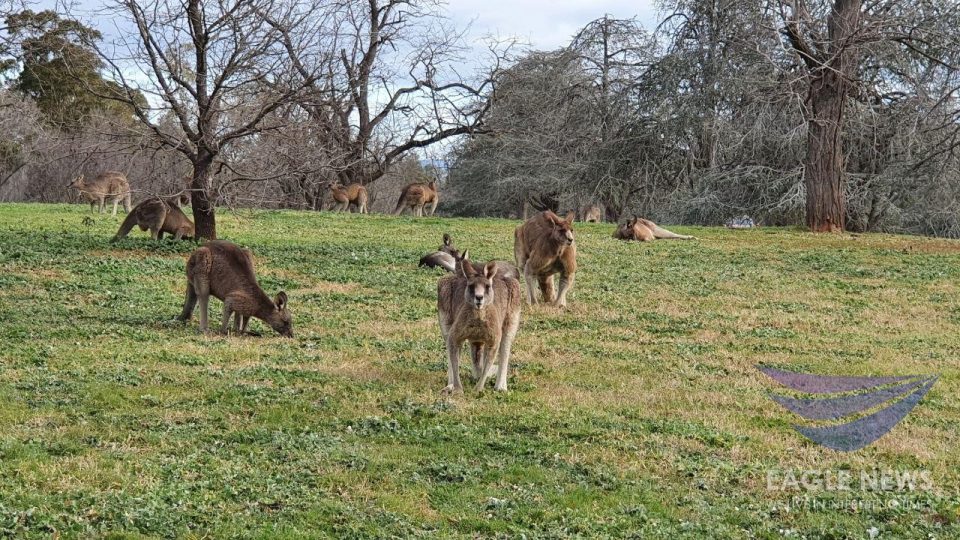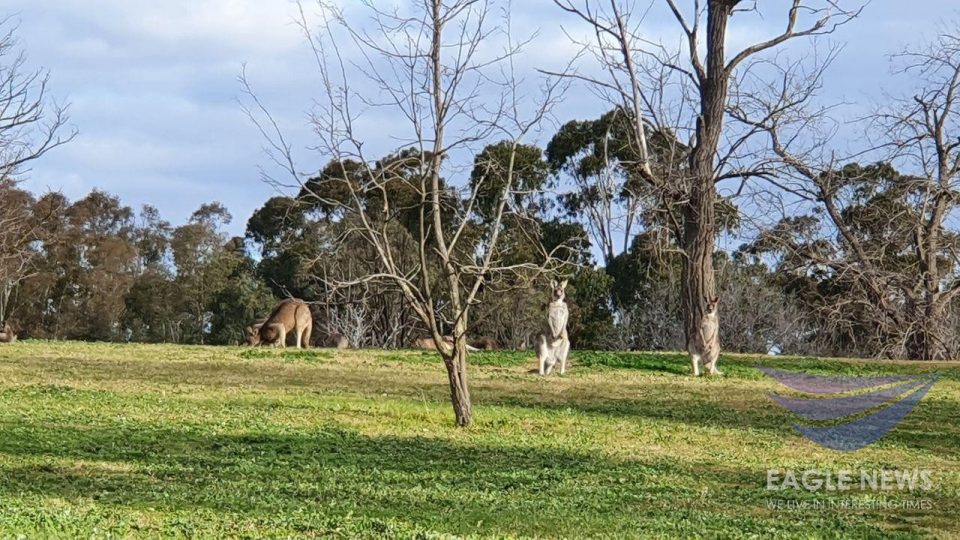By Rohnczel Castro
EBC Canberra Bureau
(Eagle News) — This year, the government of the Australian Capital Territory (ACT) aims to remove a total of 1,958 Eastern Gray Kangaroo from nine priority reserves in Canberra amid the COVID-19 pandemic.
This was earlier announced by the ACT Open Government which said that the culling, which it does yearly to control the kangaroo population in Canberra, had started in June.
Canberra, the bush capital of Australia, is the nation’s capital and also the Kangaroo Capital.
“We aim to remove 1958 Eastern Grey Kangaroos from nine priority reserves. There will be no cull in the fire-affected Namadgi National Park or Tidbinbilla Nature Reserve and none of the reserves where culling will take place have been impacted by bushfires,” said ACT Parks and Conservation Service Director, Justin Foley, in a statement posted in the ACT open government website.
“We have modified the 2020 program to ensure it complies with COVID-19 protocols and to reflect that more people are currently using our reserves due to pandemic restrictions,” he said.
“We are confident this number will let us achieve high animal welfare and priority conservation outcomes while maintaining public, staff and contractor safety,” Foley said.
As early as last month, Foley said he hoped that the community would understand the culling to be done on kangaroos, saying this was “vital for the wellbeing of the environment.”

“Kangaroos are an integral part of the ecosystems around Canberra and we hope the community will understand that the conservation cull is vital for the wellbeing of the environment and the many plants and animals that call our reserves home,” Foley said.
He cited research that “demonstrate(d) that overgrazing by kangaroos, particularly in critical conservation areas, can threaten the survival of local grassland sites and species.”
“Although the grass is green due to recent rain, the ecosystem is still fragile; the animals that rely on the grasses for food, shelter and breeding purposes, including several endangered species, are still recovering from extended hot and dry conditions,” he said.

“We must continue to manage kangaroos to reduce grazing pressure and help our nature reserves maintain resilience against the effects of climate change into the future,” he added in a statement.
“Nobody likes shooting kangaroos, however we accept it’s the most humane method of kangaroo population management available to the ACT Government as a responsible land manager,” he said.
The conservation cull aims to remove 1,958 Eastern Grey Kangaroo from nine Priority reserves including: Mulligans Flat Nature Reserve, Isaacs Ridge Mature Reserve, Mt Mugga Mugga Nature Reserve, Crace grasslands Nature Reserve, Gungaderra Grasslands Nature Reserve, Mulanggari Grasslands Nature Reserve, Goorooyaroo Nature Reserve, West Jerrabomberra Nature Reserve, Callum Brae Nature Reserve, all unaffected by the drought and bushfires.
ACT said that these reserves are still open to the public during mornings from Sunday to Thursday and closed during evening time.
The culling is to be done amid calls from various sectors, including environmental and animal welfare groups, to stop this.
“Every year the ACT government pushes ahead with its kangaroo ‘management’ cull program — approving plans to slaughter hundreds of kangaroos on reserves in and around Canberra. And every year, evidence has emerged of kangaroos facing prolonged and agonizing deaths,” said the website of Animals Australia.org (https://www.animalsaustralia.org/take_action/stop-kangaroo-slaughter-ACT/)
“Tragically, it’s not just adult kangaroos who are affected. When shooters kill a mother who is carrying a joey, government standards recommend that the joey be killed by decapitation or a blow to the head. Worse still, although government standards require that ‘at foot’ young kangaroos be similarly dispatched, these ‘toddlers’ are often simply abandoned to die from starvation, predation or on the roads. Most of them are still too young to have learned the basic skills to protect themselves from these dangers without their mums,” it said.
There are also campaigns and petitions seeking to stop the culling.
The Australian Capital Territory or ACT has been known for its many beautiful wildlife and nature reserves, places where both man and nature are intertwined in a balance of daily life necessities. Despite this balance, there are many situations where authorities take drastic measures and actions as a response to unpredicted circumstances.
One of these responses is the culling of kangaroos which the ACT government continued to push.
With the end of the bushfire and drought season, the current grass ecosystem is still recovering from the peril of the bush fire season. ACT said that the timely instinctive behavioural response from the fauna (mainly the eastern grey kangaroo) has also affected this already fragile system, citing various studies.
According to the summary of recent papers compiled by the ACT Government’s Environment and Planning published in 2015, pertinent studies show evidence of high densities of Eastern Grey Kangaroos (EGKs) negatively impacting many other fauna in the area, the ACT government said. All eight studies in the said research also tackled information in regards to how different taxa are affected by high density of EGKs and their grazing habits. (Reference: https://www.environment.act.gov.au/__data/assets/pdf_file/0007/902446/Effects-of-kangaroo-grazing-and-biodiversity.pdf)
In 2019, around 4,035 kangaroos were culled. This 2020, the conservation cull aims to remove 1,958 Eastern Grey Kangaroo from nine of the 37 Canberra Nature Park nature reserves.
(Eagle News Service)








